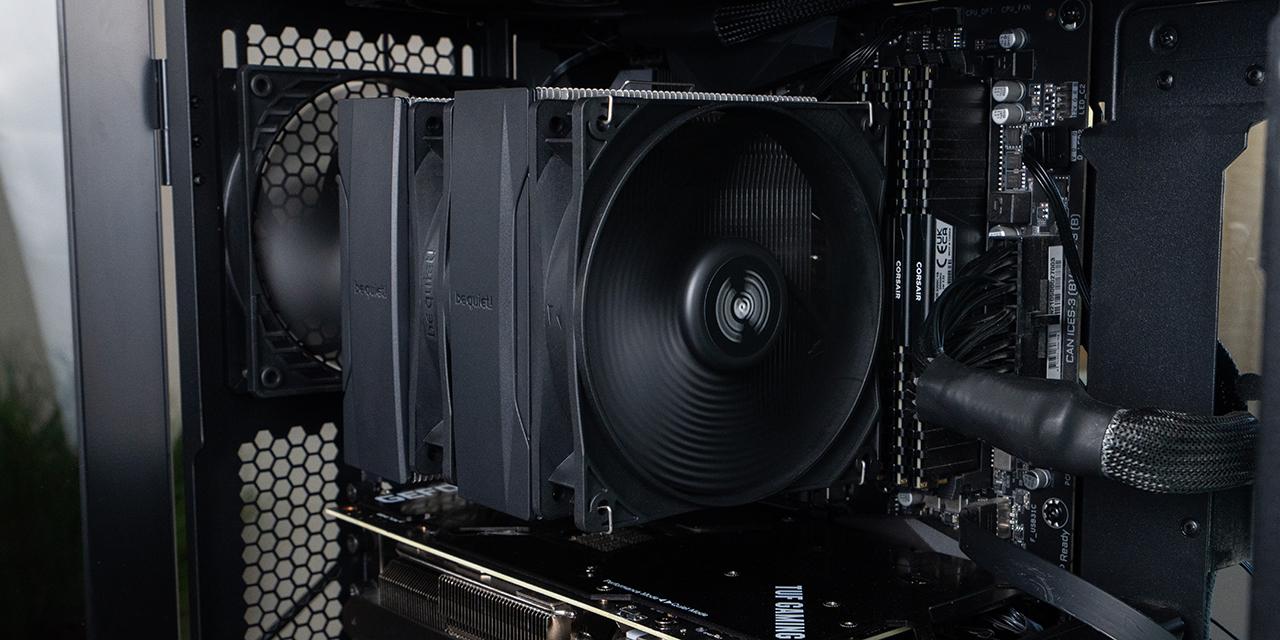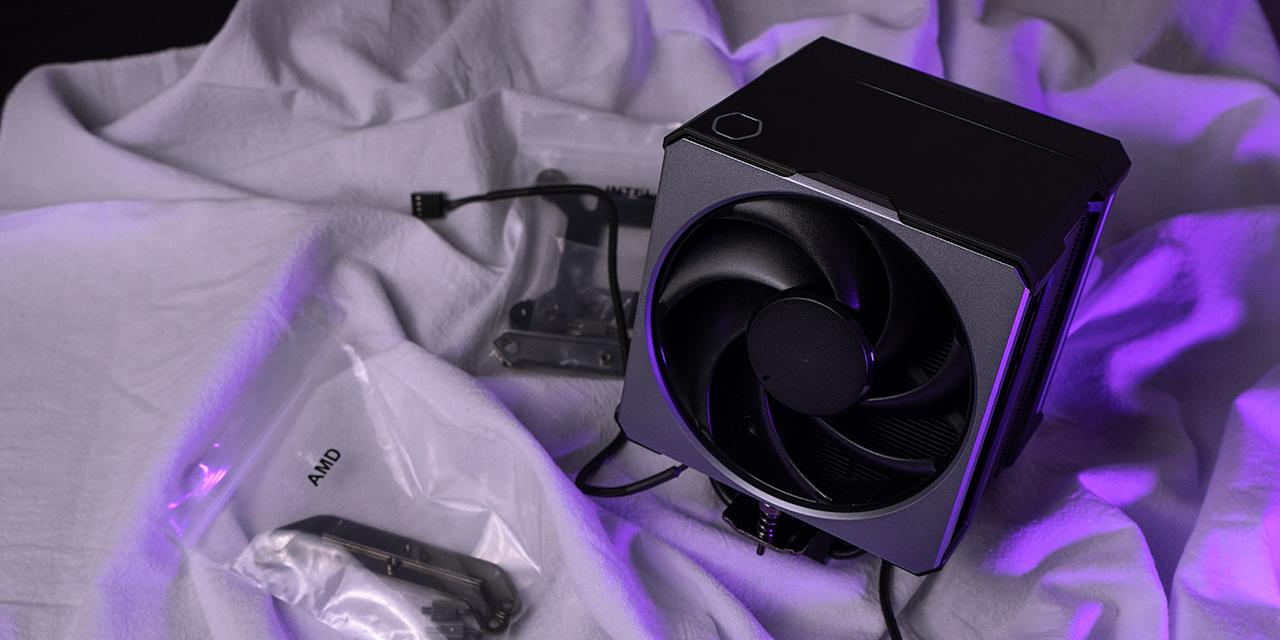By: Devin Chollak
March 9, 2012
Have you ever wondered if using air cooling for your computer will be effective in the future with all the concern about global warming? What exactly is causing global warming is up for debate; however, it would be hard for anyone to ignore the climate change we are seeing today. While I don't think global warming is a fair reason to ignore the benefit of adding fans to your chassis, it leaves me wondering how much benefit it will really provide in the future, unless you live in an air conditioned home. What we have here at APH Networks this morning is a set of SilenX's Effizio EFX-12-15 case fans, which will be put through our usual array of rigorous testing. This time around, however, we will be doing three times the normal amount of testing. Why? Well, we have not one, not two, but three fans for us to play with today. This means I will be able to easily see what these fans are capable of doing. Considering they come from a company called SilenX, I hope these fans are dead silent, or I'll be requesting the company change their name, haha. If you are quiet computer enthusiast, you know silence comes with a price tag, but will these fans prove even silence can come at an affordable cost? Well, read on to find out the answer. Oddly enough, I can't help but think about how these fans will be contributing to global warming; this is because the electricity generated here in Calgary is from coal power. Nevertheless, a few extra watts for each fan is not going to cause "The Day After Tomorrow" or "2012", but if it does, don't be blaming me!
The SilenX Effizio EFX-12-15 arrived here at our Calgary, Alberta office a few weeks ago. Coming all the way up from California via USPS with a Canada Post transfer, it appears to have been rather silent about its journey. Suffering almost no damage to the box at all, you would almost assume it never even traveled in the first place. One thing which should be noted about the shipping packaging is the box is very sturdy and thick. It seems overkill for the case fans inside, but keep in mind we got two other heatsinks inside as well. Well, as I am certain many of you are not overly concerned about the shipping package, so let us take a look at the retail packaging of the case fans.
Looking at the retail packages, it certainly will find a place among my favorite designs. They are made out of clear plastic, and are held together by friction edges, which is one of the best ways to keep a package together in my personal opinion. This means the consumer is able to clearly see the contents without exposing the actual product to the external environment. While some manufacturers might prefer to hide their flaws, all three SilenX Effizio EFX-12-15 fans appear to have nothing to hide, with everything showing through right off the bat. Cracking it open is relatively easy without the need for sharp pointy objects or scissors, which may be hazardous and should be used with adult supervision, haha. The plastic container does a good job of holding the fan inside, and by applying force in the right places, it allows for the consumer to remove the parts without destroying anything. Sticking to a simplistic style, the packaging sports a simple red and black design for a sharp, crisp look. The tinted white color used for the lettering presents the name of the product clearly on the front. You can also see a few details about the product here as well, including the 120mm size, 74 CFM airflow, and 15 dBA rated sound pressure. While the rest of the specifications are not clearly specified on here, the main values are listed. So far, things are looking pretty respectable for the Effizio EFX-12-15, so let's take a look at what is inside.
It should be fairly obvious that inside the packaging, you fill find the case fan itself. Additionally, you will also be able to find a bag for the parts and an instruction manual. The fan itself comes in an almost blood-red color. This means if you decide it is a good idea to put your finger in the fan while it is spinning, it won't change color when you cut your finger. I am definitely not recommending it, but I have certainly broken a fan in the past by doing something along these lines. I'll just say it hurts a lot more than a paper cut. Inside of the fan's parts bag, you will come across the following items: A set of four screws, and another set of four silicone spacers. This seems to be pretty standard; almost a little bit generous with the fact both types of attachment pieces are provided -- good job to SilenX. It is quite impressive to see the instruction manual being printed in color. This adds a nice visual to the normally plain and black information I am used to seeing. Although I am slightly skeptical about the need for instructions when installing a fan, I guess if you have never seen silicone attachments before, you might want to consider a look. Seeing how you are now familiar with this sneaky fan's pieces, below are the features and specifications listed from the manufacturer's website:
Specifications
SKU: EFX-12-15
Rated dBA: 15
Dimensions: 120x120x25mm
Rpm: 1400
Cfm: 74
Operating Voltage: 6-12v
Current Draw: 0.11A
Power Consumption: 1.32w
Bearings: 3rd generation fluid dynamic bearings
Looking at plastic frame around the fan, you shouldn't be too surprised about the design, unless you have never seen a case fan before. This is essentially an industry standard, with nothing particularly fancy about it. On the other hand, the power cable that comes out of the fan is not what I would consider standard. It offers both 3-pin motherboard header and a 4-pin Molex connector for power; additionally, the cable proves to be a bit longer than most cables I have seen on case fans in the past. In fact, it is almost long enough to allow for me to run from the upper back corner of a standard mid-tower chassis to the bottom front corner. The downside to the power cable on the Effizio EFX-12-15 is that it is not sleeved. It is mainly an aesthetics thing, but just to point it out. That said, I have a feeling if you are buying these fans you probably have a rough idea on how to properly position cables already.
The fan uses a long smooth leading edge for the blade design. This is to reduce the amount of noise generated from the blades when the fan is rotating at high speeds. There are a total of seven blades, and together they take up a large portion of the fan. This contrasts to the NZXT FX 120LB I have reviewed in the past, which has significantly smaller blades. Having larger blades means the fan can have a slower rotational speed, yet still maintain the same airflow. Hopefully, SilenX does not disappoint when we take a look at the real world testing. Certainly, the impeller is one of the most critical parts of the fan; however, the fan itself must be attached to the chassis by something, so let's take a look at those pieces.
The instructions indicate the screws are simply a fall back for silicone attachments. The rationale behind this is for the fans to provide minimal vibration noise when installed. The silicone spacers dampen the vibration motion created by the fan during operation to eliminate noise, which I am certain would drive silent computer enthusiasts nuts. The provided screws, being metal, lack the absorptive qualities provided by the silicone attachments, and as a result allow the noise to transfer directly through chassis. Just like the installation guide, I wouldn't recommend the screws, unless you have an absolute need for them. The reason behind this is almost every chassis I've worked with is made of metal, and typically ends up acting like an amplifier for vibration noise. If you are sitting in a quiet room, this would translate into an irritating hum being transmitted from your computer.
One issue with the SilenX Effizio EFX-12-15 is the lack of control over the fan speed. However, it doesn't mean the fan should be considered a poor product. Instead, the real question is if the fan offers high enough performance for customization to be unnecessary. While the design is optimized to provide a respectable airflow to noise ratio, neither value can be effectively given an objective measurement. It would be no different than basing processor performance on clock frequency alone. If you are already aware of the reasons why, I would suggest skipping directly to the testing section. Otherwise, read on to find out about how objective values are not a good way to interpret perceived values, as pointed out by my colleague Jonathan in his past articles such as the Noctua NF-F12 PWM and NF-P12 PWM review.
As some of you might be aware, dB (Decibels) is a logarithmic unit of sound intensity. While it provides what appears to be an objective measurement for the most part, it should be noted perceived noise levels to the human ear, and actual sound intensity, could result in very different things. Human ears are more sensitive to certain frequencies, and when those particular frequencies are emitted from its source, it may appear louder than the numbers suggest. That same can be said vice-versa -- frequencies that human ears are less sensitive to can actually have louder dB measurements from a sound meter, yet the human ears does not perceive it to be as loud simply because our ears have a harder time detecting the sound. Other factors such as turbulence noise are often not measured correctly, therefore, while it usually provides a good reference, it does not necessarily reflect real life performance. This is the main motivation for the usage of our APH sound scale when it comes to perceived noise.
In terms of the application and the CFM, in most cases, it is usually the best to have a fan that has a high air volume flow rate, but as stated above, pure CFM values do not tell the whole story in terms of overall fan performance. Not all of it is about exactly how much air it can move per minute quantitatively, but it is also as important as how it is done in real world usage. Airflow to noise ratio is also another important aspect as aforementioned. Static pressure is yet another very important part depending on the usage of it. Applications that require high resistance such as the much denser fins on a large heatsink requires a higher static pressure, while case fans needs less static pressure and faster airflow to circulate air in the overall system better. This is only for a difference in application so for our case fans, it would make sense to have lower static pressure and a faster airflow when using it as a case fan. On the other hand, if it is used on a heatsink, it may be better to find a different alternative that has higher static pressure.
-----------------------------------------
The Tests
At APH Networks, we like to test our fans with a highly specialized, hardcore scientific technique called the tissue paper test. What this test does is it allows us to see is the aerodynamic properties of the fan. From the above image, you can visually see the SilenX Effizio EFX-12-15 creates a helix-like airflow pattern. This type of airflow is typical for many case fans, as it is simply how they work. It is kind of like how exhaust gas comes out of the tailpipe a car, unless you put balloon over it. (Not sure how this relates, haha. - Editor) However, what generally varies between the fans is the stability and distribution of airflow. While images are not the clearest way to show this, the lack of motion near the end of the tissue paper shows the air is constant and evenly flowing with good static pressure. Low quality fans usually lack this performance, and have the tendency to flap around because the airflow or static pressure is not very consistent. The SilenX Effizio EFX-12-15 is certainly not your low quality fan from what I can see.
I have to admit I am slightly disappointed in the fact there isn't a way to control the fan speed. The good news is that these fans comes with 3-pin motherboard headers, so let's hope your motherboard does a good job in this regard. If you are very concerned about noise you could put in your own resistor to reduce the power to the fan, or you can buy your own fan controller. That said, I found the fans certainly provide an excellent level of airflow, and under normal conditions these fans will easily provide more than enough. While the fans don't provide as much airflow as the NZXT FX 120LB or NZXT FX 140LB from what I can see, they offer significantly less noise for similar amount of airflow. Compared to the Noctua NF-F12 PWM and NF-P12 PWM, the Effizio EFX-12-15 does not produce as much static pressure as the former, nor does it move as much air as the latter at the same amount of noise. But hey -- the SilenX is cheaper by quite a bit.
When it comes to the noise produced by the fans, I was rather surprised at the lack of audible sound. However, when you come up close to the fans, you can clearly hear the low frequency hum from the DC electric motor. This is quite normal; and it is not overly annoying. The good news is having my other computer case fans being loud enough to block out the noise, but when I turn them off, the SilenX fans' motor noise can barely be heard, unless you are very close to them. If all I was using were the SilenX fans, the signature motor noise is definitely not going to be annoying at all.
Using the standard APH way of measuring noise, I will put the SilenX Effizio fans on the APH Networks subjective sound scale. Ranging from 0 being a ninja sneaking around to 10 being a bag of aluminum cans thrown down a metal stairwell, I would put the Effizio EFX-12-15 at approximately 2.0/10. The reason for this value is under normal conditions at a reasonable distance from the fans, you will not be able to hear any significant amount of noise. Obviously, if you put your ear very close to the fans, you will definitely hear the low frequency humming noise from the motor. The motor runs very smoothly, with noise perceivable but not very loud at all; hence the 2.0/10 I gave. Lower the number, the better.
-----------------------------------------
The real question everyone is concerned about is if the SilenX Effizio EFX-12-15 is really worth the price tag. Retailing for $12 at press time, I'm actually rather surprised by the price and the overall quality of the fan. I do like the smooth and constant airflow, which is provided with minimal noise. The fan also has a reasonably long cable running from it, letting consumers utilize the 3-pin power connections on their motherboards. By offering power 4-pin Molex and 3-pin motherboard power connections the SilenX fan is clearly giving the user a choice for which power connections to use. Unfortunately, the cables are not sleeved, but what can you expect for this price? The inability to control the speed of the fans is almost unnecessary, as the fan provides high airflow with little noise out of the box. And on that topic, these fans are nearly silent, with smooth motor noise. The provided silicone spacers will prevent vibrations from traveling throughout the chassis as well. Overall, these fans certainly provide the advertised specifications as seen on the box with no real surprises here. In comparison to other fan products in this price range, the SilenX Effizio EFX-12-15 fans are actually very impressive.
SilenX provided this product to APH Networks for the purpose of evaluation.

APH equal.balance Award | APH Review Focus Summary:
7/10 means Great product with many advantages and certain insignificant drawbacks; but should be considered before purchasing.
8/10 means Definitely a very good product with drawbacks that aren't likely going to matter to the end user.
-- Final APH Numeric Rating is 7.8/10
Please note that the APH Numeric Rating system is based off our proprietary guidelines in the Review Focus, and should not be compared to other sites.
The SilenX Effizio EFX-12-15 case fans offer incredible value to those looking for quiet cooling products on a budget.
Do you have any comments or questions about the SilenX Effizio EFX-12-15? Drop by our Forums. Registration is free, and it only takes a minute!





